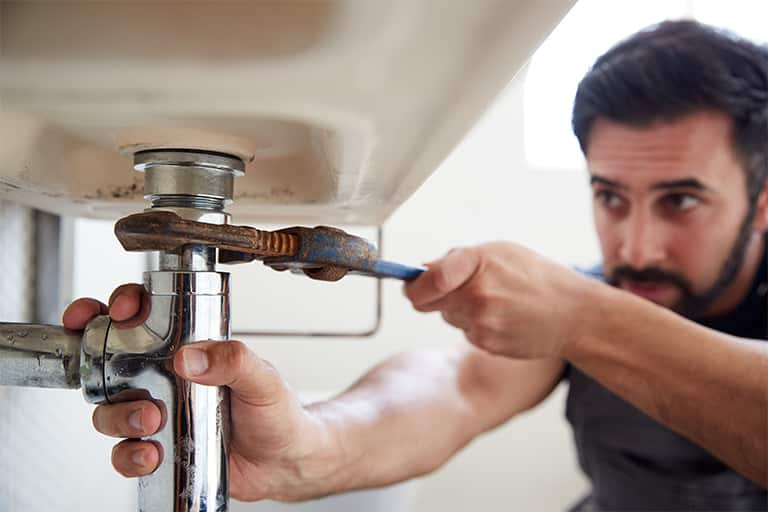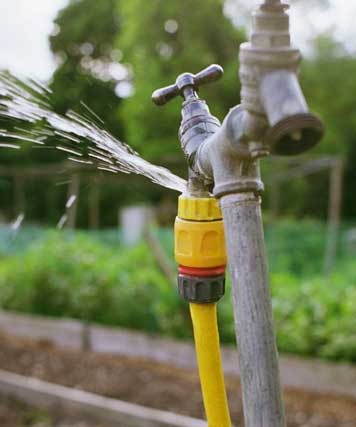Were you interested in answers about Detecting hidden plumbing leaks?

Early discovery of dripping water lines can mitigate a prospective calamity. Apart from saving you cash, it will certainly minimize the worry as well as irritation. The minute you find a leakage, calling your plumber for repairs is the most effective solution. Nevertheless, some tiny water leakages might not be visible. Below are some hacks that assist if you can not detect it with your nude eyes.
1. Check Out the Water Meter
Every home has a water meter. Examining it is a surefire manner in which helps you find leakages. For beginners, shut off all the water resources. Ensure no person will purge, make use of the faucet, shower, run the washing maker or dishwasher. From there, go to the meter as well as watch if it will certainly change. Because nobody is utilizing it, there need to be no movements. If it moves, that suggests a fast-moving leakage. Similarly, if you identify no changes, wait an hour or more as well as examine back once more. This suggests you might have a slow leak that could even be underground.
2. Inspect Water Usage
If you detect abrupt modifications, in spite of your consumption being the same, it indicates that you have leaks in your plumbing system. A sudden spike in your bill shows a fast-moving leakage.
On the other hand, a stable increase every month, despite having the very same practices, shows you have a slow-moving leakage that's additionally gradually escalating. Call a plumber to thoroughly inspect your home, especially if you really feel a warm location on your floor with piping underneath.
3. Do a Food Coloring Examination
30% comes from bathrooms when it comes to water consumption. Examination to see if they are running properly. Drop specks of food color in the storage tank as well as wait 10 minutes. If the shade somehow infiltrates your dish during that time without flushing, there's a leakage between the storage tank and bowl.
4. Asses Exterior Lines
Do not forget to check your outdoor water lines as well. Must water leak out of the connection, you have a loosened rubber gasket. One small leakage can lose tons of water and spike your water bill.
5. Examine the scenario and examine
Property owners must make it a routine to inspect under the sink counters as well as even inside cupboards for any bad odor or mold growth. These 2 warnings indicate a leak so punctual interest is needed. Doing routine examinations, also bi-annually, can save you from a major issue.
Examine for discolorations and deteriorating as many pipelines as well as devices have a life span. If you suspect dripping water lines in your plumbing system, do not wait for it to intensify.
Early discovery of leaking water lines can minimize a potential calamity. Some tiny water leakages might not be visible. Examining it is a surefire way that assists you uncover leaks. One little leak can lose tons of water as well as increase your water bill.
If you presume dripping water lines in your plumbing system, don't wait for it to intensify.
How to Know If Your Home Has a Hidden Leak
Water Meter Reveals Inexplicable Water Usage
If you’d like to test whether or not there’s a leak somewhere in your home, you can do this using your water meter. Here is how to conduct the test:
Don’t use any water in your home for at least 30 minutes; this also means not turning on faucets or water-using appliances.
Go outside, and check your water meter for activity.
If your water meter shows that there was activity, even though no one was using any water, this proves that there is a leak in your home.Visible Mold or Mildew Growth
Leaks behind walls create moist, dark environments that allow mold and mildew to grow and thrive. Eventually, you might see mold growth forming on the wall closest to a hidden leak.
If mold is growing in an area that receives a high amount of moisture, such as a bathroom, it may simply be an indication that better ventilation is needed. However, if you see mold growth on a wall or the ceiling in an area where you would not expect, you probably have a hidden leak.
Musty, Mildew Odor
Sometimes you might not be able to see the mold or mildew that is growing as a result of a leak. However, the smell can give the problem away just as easily. If you catch a whiff of something musty, there’s a good chance that old water is collecting somewhere in your home that you can’t see.
Stained/Warped Walls, Ceilings, or Floors
When your home soaks up water, a variety of red flags can become visible, including ceiling stains, bubbling drywall, warped walls, and sagging floors. While these issues can be caused by excess humidity, they can also be signs that a pipe or plumbing connection has started leaking behind your walls.
Inexplicably High Water Bill
After a while, you get a general sense for what your water bill should be. If you own a pool or sprinkler system, your bill will tend to be higher during summer. However, if you receive a water bill that seems especially high, and you can’t figure out what caused it, then you may have a hidden leak somewhere that’s increasing your bill.
https://www.plumbingjoint.com/blog/2019/july/how-to-know-if-your-home-has-a-hidden-leak/

I was made aware of that write-up about Leaking water lines from an associate on a different site. Sharing is nice. You just don't know, you may very well be helping someone out. We thank you for reading our article about Finding hidden leaks.